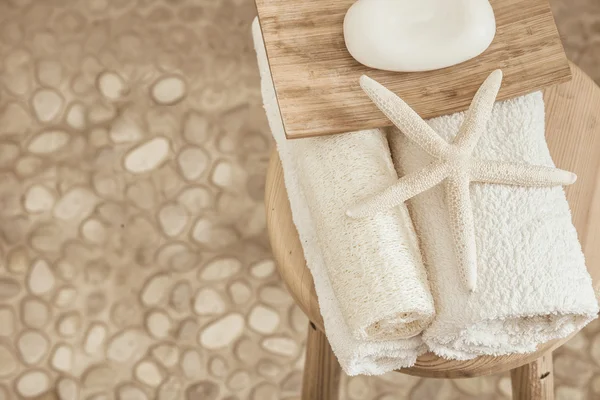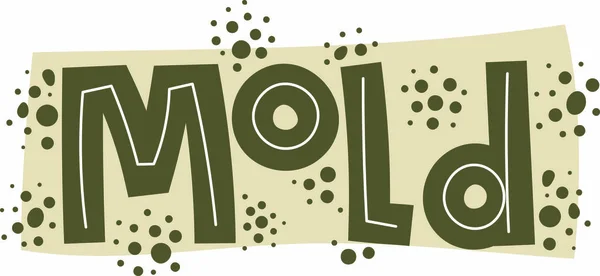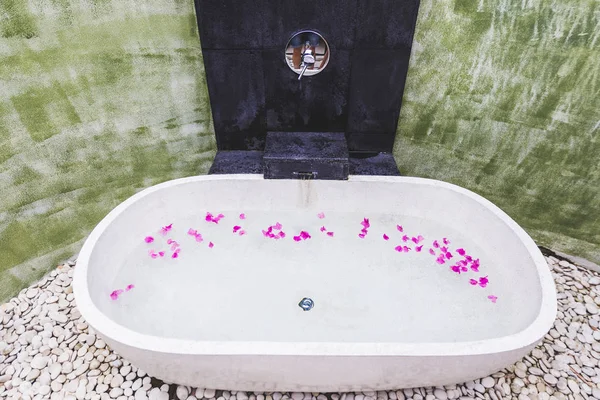
Keeping a clean and mold-free pebble shower floor is not only essential for maintaining the aesthetics of your bathroom but also for your health and safety. Mold growth in the shower can lead to various health risks, making it crucial to address the issue promptly.
Mold in the shower can pose health risks such as allergies, respiratory problems, and skin irritation. Breathing in mold spores can trigger allergic reactions and aggravate conditions like asthma. Mold can spread to other areas of your bathroom, causing structural damage and increasing the difficulty of mold removal.
What are the Health Risks of Mold in the Shower?
Exposure to mold in the shower can pose several health risks that are important to be aware of. Respiratory issues such as coughing, wheezing, and throat irritation can be caused by mold. Mold releases spores into the air, which can be inhaled and trigger allergies or asthma attacks. That’s why you should know how to clean mold under your kitchen sink as well because that is a highly prone area to grow mold.
Additionally, mold in the shower can lead to skin problems, including skin irritations, rashes, and itching, especially for individuals with sensitive skin or pre-existing skin conditions. Furthermore, mold in the shower can impact overall health by contributing to a weakened immune system, making individuals more susceptible to illnesses and infections.
It is important to note that certain types of mold, such as black mold, can release harmful mycotoxins when inhaled or ingested. These mycotoxins can result in more severe health problems, including headaches, fatigue, and even neurological issues in some cases.
To ensure a safe and healthy environment, it is crucial to promptly address mold growth in the shower and take necessary precautions to prevent its recurrence. Regular cleaning, proper ventilation, and maintaining a dry shower area can all help minimize the health risks associated with mold.
Preparing for Mold Cleaning
To prepare for tackling that pesky mold on your pebble shower floor, we need to start with the basics. In this section, we’ll dive into the crucial steps of preparing for mold cleaning.
Taking Safety Precautions
- Ensure your safety by wearing protective gear like gloves, goggles, and a mask. This will prevent direct contact with mold spores and inhalation.
- For better ventilation, open windows or use fans in the bathroom to reduce airborne mold spores.
- Clear the shower area of any items to establish an unobstructed workspace and prevent contamination.
- Create a cleaning solution using a mold-specific cleaner or a bleach and water mixture. Be sure to adhere to the instructions on the product label.
- To avoid any adverse reactions or discoloration, test the cleaning solution on a small, inconspicuous area of the pebble shower floor.
Adhering to safety precautions when managing mold is essential for maintaining a healthy living environment. Exposure to mold can result in respiratory issues, allergies, and other health problems.
How to Clean Mold from Pebble Shower Floor

Get ready to say goodbye to that pesky mold! In this section, we’ll dive into three powerful techniques for tackling the issue.
Using Vinegar
- Prepare a solution of equal parts white vinegar and water in a spray bottle.
- Spray the solution directly onto the moldy areas of the shower floor.
- Let the vinegar solution sit for about one hour to penetrate and kill the mold.
- Use a scrub brush or sponge to scrub the moldy areas, applying some pressure to remove the mold.
- Rinse the shower floor thoroughly with water to remove any residue.
- Make sure to dry the shower floor completely to prevent mold regrowth.
Using Hydrogen Peroxide
- Put on gloves and safety goggles to protect yourself.
- Pour undiluted hydrogen peroxide into a spray bottle.
- Spray the hydrogen peroxide directly onto the moldy areas of the pebble shower floor.
- Let the hydrogen peroxide sit for about 10 minutes to kill the mold.
- Scrub the moldy areas with a scrub brush to remove the mold and any stains.
- Rinse the area thoroughly with water to remove any remaining hydrogen peroxide.
- Inspect the area to ensure all mold has been removed. If any mold remains, repeat the process.
- Dry the pebble shower floor completely to prevent future mold growth.
Using hydrogen peroxide as Method 2 can help kill and remove mold from the pebble shower floor, ensuring a clean and safe environment.
Remember to always follow safety precautions when working with cleaning products and wear protective gear.
By following these steps, you can effectively clean mold from a pebble shower floor using hydrogen peroxide.
Using Borax
To clean mold from a pebble shower floor using borax, follow these steps:
- Mix a solution of 1 cup of borax and 1 gallon of hot water in a bucket.
- Using a scrub brush or sponge, apply the borax solution to the moldy areas on the pebble shower floor.
- Scrub the affected areas vigorously to remove the mold. Make sure to reach into the crevices between the pebbles.
- Rinse the floor thoroughly with clean water to remove any residue.
- Repeat the process if necessary to ensure all mold is removed.
- Allow the shower floor to air dry completely.
- After the floor is dry, inspect the area for any remaining mold spots. If there are any, repeat the cleaning process.
- Once all mold is removed, it is recommended to regularly clean the pebble shower floor using a shower cleaner to prevent future mold growth.
By following these steps, you can effectively clean mold from your pebble shower floor using borax.
How Often Should I Clean the Pebble Shower Floor to Prevent Mold?
To maintain a mold-free pebble shower floor, it is important to clean it regularly. Mold tends to thrive in damp environments, so regular cleaning helps to keep the area dry and prevent mold from developing. Ideally, the pebble shower floor should be cleaned at least once a week to inhibit mold growth. The frequency of cleaning may vary depending on the level of use and the humidity in the bathroom.
If you frequently use the shower or live in a humid climate, it may be necessary to clean the pebble shower floor more frequently to prevent mold. In such cases, cleaning the floor every few days or every other day may be required. It is crucial to pay attention to any signs of mold growth, such as discoloration or musty odors, and increase the cleaning frequency accordingly.

Apart from regular cleaning, regular maintenance and keeping the shower area dry can also help prevent mold growth on the pebble shower floor. After each use, make sure to wipe down the surfaces to keep the shower area dry. Additionally, using a shower cleaner with mold-fighting properties can further inhibit mold growth. By following these practices, you can effectively maintain a clean and mold-free pebble shower floor.
Reach out to us at Ivy Cleans if you need professional cleaning help in Minneapolis, Minnesota. Talk to our representative and let us handle your residential or commercial mold and cleaning problem.
If you’re looking for more content like this read our blog on how to clean mold from your couch.
